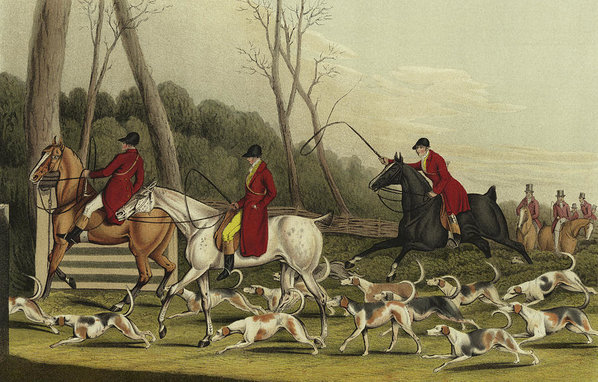
George Bernard Shaw once said that England and America are two countries separated by a common language, but the two countries also differ in fox hunting. Colonists brought fox hunting to America where it quickly spread throughout the colonies, and the earliest known North American fox hunting event occurred in Maryland in 1650. What started as vermin control in England, however, morphed from its original roots.
In Great Britain, the original goal was to dispatch the fox, a lethal threat to livestock and sheep farms, particularly during lambing season. In contrast, American fox hunts came to emphasize the chase rather than the kill. Over time, the object of the hunt came to be not about catching the fox, but to chase him or her until s/he went to ground, and at that point, look for another fox to chase.
These days, an artificial trail of scent that mimics the trail of a fox will be laid down for the hounds to follow. It’s a good option when dealing with populated areas and landowners because it ensures that the hunt goes only where it is welcome, and hounds aren’t put in harm’s way by traffic.
It may surprise some to learn that the most ardent advocates for foxes are often fox hunters. In Pennsylvania, it was fox hunters who lobbied for years first to have a bounty removed from foxes, and then to have the critter declared a fur-bearing animal with a closed season. Interestingly, we came across a site that maintained that in areas where the fox is “hunted” with hounds, there are more foxes, not fewer, due to the efforts of fox hunters.
As for the dogs used in fox hunts, they are (wait for it) Foxhounds! Within the fox hunt world, dogs that hunt cooperatively as a pack and work with hunters on horseback include English, American, Crossbred and Penn-MaryDel Foxhound, as well as Harriers. These amiable dogs live for hunting and are bred to have soundness, a “nose (scenting ability), cry (a voice), fox-sense, drive, steadiness, and a biddable nature. Young hounds are introduced into a pack during the less formal “cubbing” season, and the formal season begins with an Opening Meet typically held in early November.
“Fox Hunting Going Into Cover” by Henry Thomas Alken is available in many formats here.

One thought on “Fox Hunts: American v English”